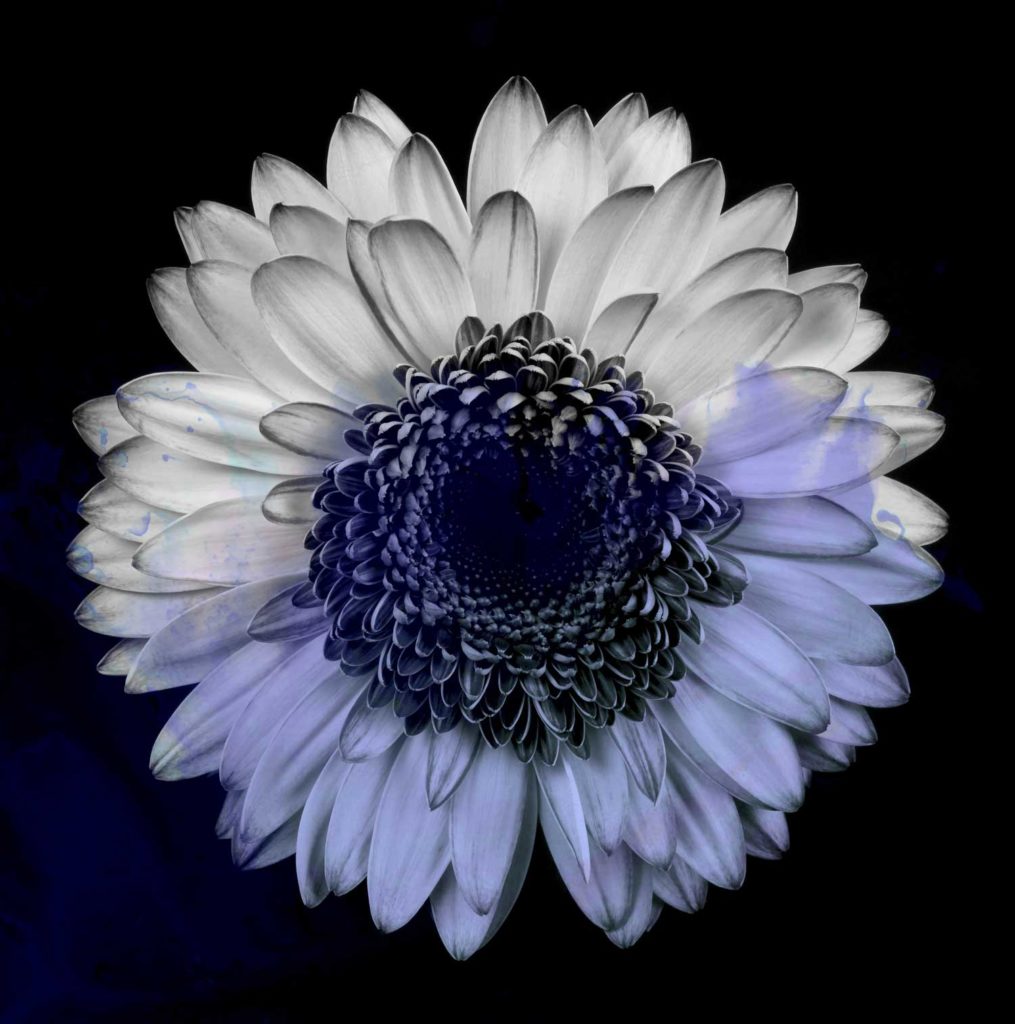Blossoming forth with bright luminescence, local artist Tasha Ostrander’s Night Bluem XV is a light in the darkness, tempting you into many-petaled folds. The image is a light jet print from a series of similar floral images called Night Bluems available at Chiaroscuro Contemporary Art (558 Canyon Road, 505-992-0711, chiaroscurosantafe.com).
The flower, a gerbera daisy, is set against a backdrop of solid black. A color that exists on the bluer end of the lilac spectrum washes over the bottom half of the daisy, lending it a spectral presence. Blue gerbera daisies don’t exist in nature. If you find one, it’s been tinted, not unlike what Ostrander does to achieve the otherworldly effect of her Night Bluem.
“It’s a combination between a black-and-white photograph and what I’m calling an ink spill drawing,” she says. “The first part is photographing the flower and the second part is making this drawing.”
The ink spills are made on old Polaroid film emulsion, but the black-and-white photographs are created digitally in a separate process. She then fuses the two images — the flower and the ink spill — in Photoshop.
“The ink spills have a lot to do with the idea of chance because they’re done quickly, and there’s not a tremendous amount of control,” she says. “I’m kind of creating a dialogue between the more structured form of the flower and the more liquid spontaneity and chance-oriented drawing.”
The image resembles the circular form of a mandala. The outmost ring of bright petals surrounds a second ring of smaller petals, and so on, as each concentric ring recedes into the darkness at its center. “It’s very geometric and has an almost mathematical perfection to it,” she says. “But no two flowers are alike.”
Night-blooming flowers, such as moonflowers and daturas, have a magical, mysterious presence. The gerbera daisy is not really a night bloom, but Ostrander manipulates the image to make it appear as such. “Night is when our psyches are more alive,” she says. “It’s a time in our lives when we internalize and self-reflect. To me, these flowers are speaking of universal truths and also about going deep inside ourselves.” -Michael Abatemarco

